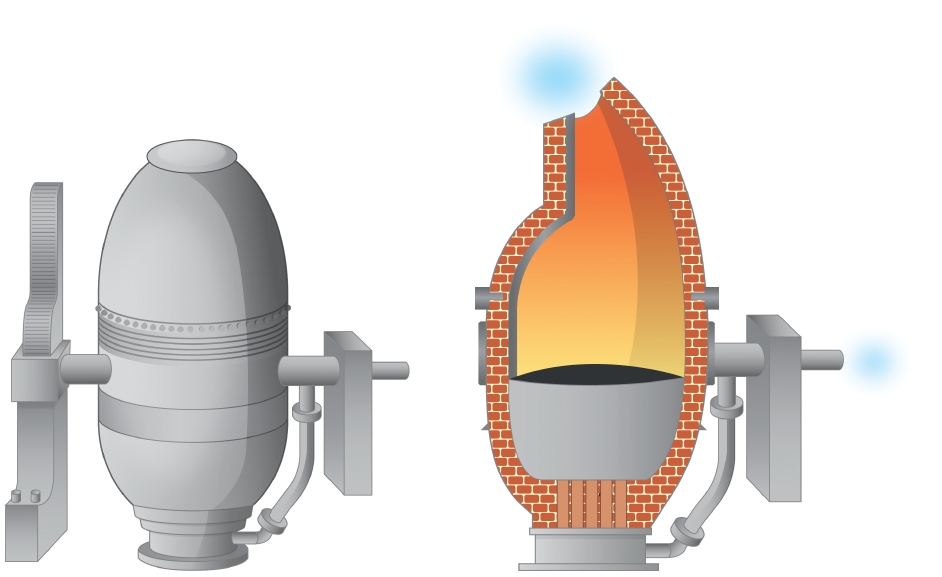The Bessemer converter

[fototag id=”Bessemer”]
The Bessemer converter was a machine and surrounding process that involved the removal of impurities from pig iron (a type of iron with a high carbon content) and its conversion into steel – a material that had historically been costly and time consuming to manufacture. The key principle behind its operation was the removal of impurities such as silicon, manganese and carbon through oxidation, turning the brittle, largely unusable pig iron into very useful steel.
The oxidation of impurities occurred in a Bessemer converter, a large egg-shaped container in which the iron was melted. The solid iron was inserted through a hole at the top and heated from the bottom. Once the converter had melted the pig iron, pressurised air was injected through and across the liquid metal, forcing the unwanted silicates to react with oxygen and convert into gas and/or solid oxides (ie slag).
Once the oxidation process had taken place, the usable molten steel could be poured out from the container directly by tipping it on a central pivot – the container was suspended off the ground by a pair of large struts – while the slag could be skimmed off the surface for reuse or disposal. The steel was emptied into large moulds, where it could be set into a wide range of products.




